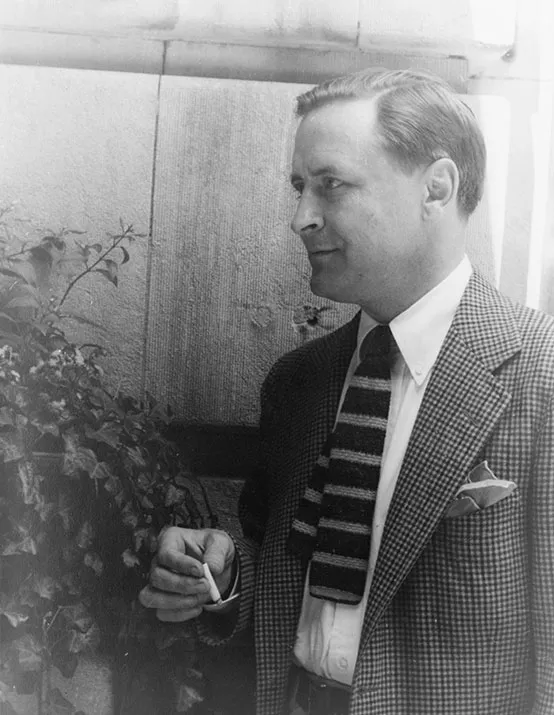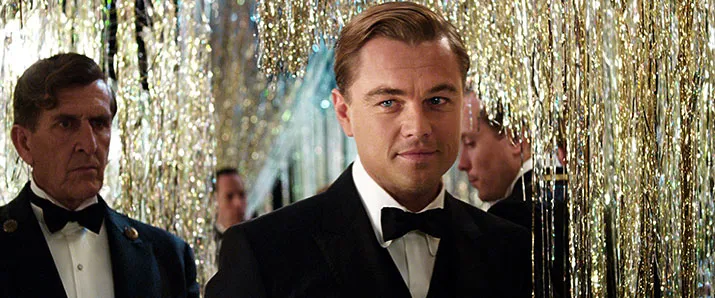Will the Real Great Gatsby Please Stand Up?
F. Scott Fitzgerald couldn’t resist putting his own life into his novels, but where’s the line between truth and fiction?
/https://tf-cmsv2-smithsonianmag-media.s3.amazonaws.com/filer/Great-Gatsby-Leonardo-Dicaprio-631.jpg)
Years after he wrote The Great Gatsby, in the back leaf of another book, F. Scott Fitzgerald scribbled a list of his most famous novel’s nine chapters. Next to each one, he wrote down his sources. There were the old-money, polo-playing Rumsies and Hitchcocks and the impressive parties thrown by movie director Allan Dwan and by Herbert Bayard Swope, the editor of the New York World. There were his own memories, of the ash heaps, of days spent in New York City, and, in particular, of one wedding—the wedding of Ginevra King, his first love. Out of the whole book, he marked only three chapters as “an invention,” “inv” or “all an invention.”
Fitzgerald did not mean for The Great Gatsby to draw heavily from his own life. His first book, This Side of Paradise, had lifted from his days as a Princeton student, and his second, The Beautiful and the Damned, from his relationship with his wife, Zelda. As he was beginning to start work on the novel that would become The Great Gatsby, Fitzgerald wrote to his editor, Max Perkins, complaining that, at 27, he had dumped more of his personal experiences into his fiction than anyone else he knew. This next novel, his new novel, would be different. “In my new novel I'm thrown directly on purely creative work,“ he wrote, “not trashy imaginings as in my stories but the sustained imagination of a sincere and yet radiant world.”
But as he wrote his book, he ended up drawing on the rowdy elegance of the Roaring Twenties milieu in which he lived to recreate that radiant world.
"He's borrowing from various kinds of sources to get his story across,“ says Scott Donaldson, the author of the Fitzgerald biography Fool for Love. "But he's really writing about himself in the book. And that's why it's so intimate and why it still resonates, I think."
To create Jay Gatsby, though, Fitzgerald also borrowed from the lives of other men, and devotees have been trying to pin down his real-life inspirations for decades. “The search for Gatsby has been one that preoccupied and eluded scholars and continues to,” says Bryant Mangum, a professor of English at Virginia Commonwealth University and the editor of F. Scott Fitzgerald in Context. “There are many, many models for Gatsby.”
It’s pretty well agreed upon that Fitzgerald took Gatsby’s backstory from his friend Robert Kerr. In the novel, Gatsby’s rise to riches begins when, out rowing on Lake Superior, he meets a yacht owner and winds up working on the boat as a body man and confidante. As a young man, Kerr had rowed out to warn a “mysterious yachtsman” of a dangerous tide and had signed on to his service. Like Gatsby’s yacht owner, Dan Cody, Kerr's yachtsman had a saucy, famous journalist for a mistress—Nellie Bly.
But this is just the beginning of Gatsby’s career, a story he keeps secret. By the time the novel begins, the man who rowed out to the yacht, the young, striving James Gatz, has already transformed into Jay Gatsby—the mansion dweller who throws lavish parties, the businessman whose business dealings are not clearly honest, the bootlegger who’s obsessed with winning Daisy back.
The Great Gatsby is set in “West Egg” and “East Egg”—Long Island communities based, respectively, on Manhasset and Great Neck, where the Fitzgeralds had moved with their newborn daughter in 1922. As they got to know their fun-loving Great Neck neighbors, they met more than one man who might have served as the model for this Gatsby. "I have unearthed some of the choicest bootleggers," Zelda wrote to a friend not long after the move. One of Fitzgerald’s closest friends, Edmund “Bunny” Wilson, wrote a play in which a character who very much resembles Fitzgerald describes his new novel’s protagonist: "He's a gentleman bootlegger; his name is Max Fleischman. He lives like a millionaire." In the margins of his copy of the play, Fitzgerald wrote, “I had told Bunny my plan for Gatsby.”
Later in his life, Fitzgerald wrote to his friend John Peale Bishop that Gatsby "started out as one man I knew and then changed into myself." There are a couple of other clues, however, that a certain bootlegger, Max Gerlach, was the “one man” Gatsby began as. Arthur Mizener, a Fitzgerald biographer, wrote that Zelda, later in her life, said that a man named “von Gerlach” was the model for Gatsby. And in 1923 Gerlach wrote a note to the author, which Fitzgerald’s daughter, Scottie, kept. It ends with Gatsby’s signature phrase, which appears 45 times in the novel: “Enroute from the coast—Here for a few days on business—How are you and the family old sport?”
But playing this game gets frustrating. Matthew Bruccoli, the leading Fitzgerald scholar for decades, was convinced that there was more to find out about the connection between Gerlach and Gatsby. At one point, he hired a private investigator to track down more of Gerlach’s history. Around the same time, another Fitzgerald scholar, Horst Kruse, was digging into the connections between Gerlach and Fitzgerald as well.
But although these scholars (and the private detective) learned more about Gerlach’s life, the more details they turned up, the less likely it seemed that Fitzgerald modeled Gatsby directly on Gerlach, who was not just a bootlegger, but spent many less glamorous years as a car dealer.
This is where this game starts to lose its charm: the more you try to match Fitzgerald’s fiction up with his life, the more tenuous the connections become.
“When I began to study Fitzgerald, it looked very easy,“ says Fitzgerald scholar James L.W. West, III, who has written most extensively about Ginevra King, Fitzgerald's own first love. “You read about his life and you read his novels, and you said oh”—that person becomes that character. “The further you go with Fitzgerald, the more complicated it becomes.”
Some characters do seem to have straightforward inspirations. The golfer Jordan Baker, a close friend of Gatsby's long-lost love, Daisy Buchanan, is based on golfer Edith Cummings, the first female athlete to appear on the cover of Time magazine and a close friend of Ginevra. Meyer Wolfsheim, the underworld connection who, Fitzgerald intimates, is one source of Gatsby’s mysterious fortune, fixed the 1919 World Series—just like Chicago gambler Arnold Rothstein was rumored to have done.
But Daisy’s husband, Tom, could have been one or all of the pack of wealthy and imposing men that Fitzgerald knew: Tommy Hitchcock, who, like Tom Buchanan, owned polo ponies and a beautiful house on Long Island, or Ginevra’s father, Charles King (also the owner of a string of polo ponies), or her husband, who came from Chicago’s uppermost social stratum, like Tom.
Daisy herself takes bits from Zelda: she holds the same hope for her daughter that Zelda had for hers—that she’ll be “a beautiful little fool.” But Daisy also resembles Ginevra—she's willing to flirt with a suitor who's not born into money but decides to marry a man of her own class, just as Ginevra did. Ginevra certainly served as a beginning point for Daisy—and many other of the wealthy, unattainable women who Fitzgerald wrote about. In Ginevra's letters, though, West says, he found a kind-hearted, irreverent girl quite distinct from the cold-hearted little rich girl that Daisy can be. The woman who stole Gatsby's heart was, in the end, one that Fitzgerald dreamed up, a puzzle almost a complicated as Gatsby himself.
Not all novels are as playfully resistant to this type of autobiographical analysis. In Ernest Hemingway’s first novel, The Sun Also Rises, published in 1926, just a year after Gatsby, the characters closely resemble the people in his life, one to one. “Brett Ashley is Duff Twysden,” says Donaldson, who’s also extensively studied Hemingway. “There's a whole book about tracking the origins of the novelistic figures to actual people that's extremely persuasive. I don't think that you can do that to Gatsby. There's more distance and more invention going on than in Hemingway's novel.”
But that doesn’t mean that learning about the people in Fitzgerald’s life and the place where he lived won’t help Gatsby fans better understand the book. “He may not be writing directly about his own experiences,” says Donaldson, “but he's writing directly about his emotional connection to what's going on in the world and to the lost, unsuccessful love affair, which is always the one that's most poignant.”
/https://tf-cmsv2-smithsonianmag-media.s3.amazonaws.com/accounts/headshot/Sarah-Laskow-240.jpg)


/https://tf-cmsv2-smithsonianmag-media.s3.amazonaws.com/accounts/headshot/Sarah-Laskow-240.jpg)